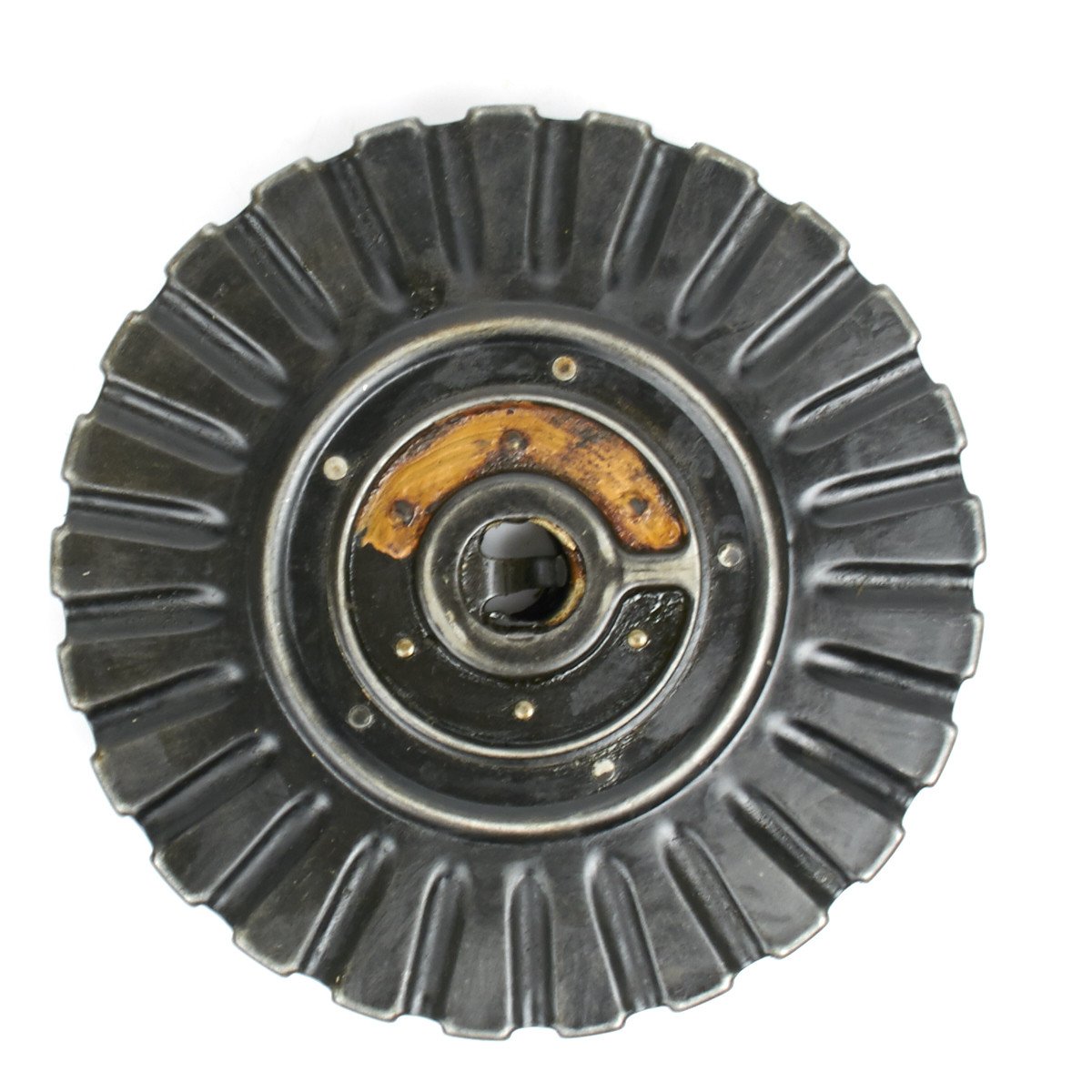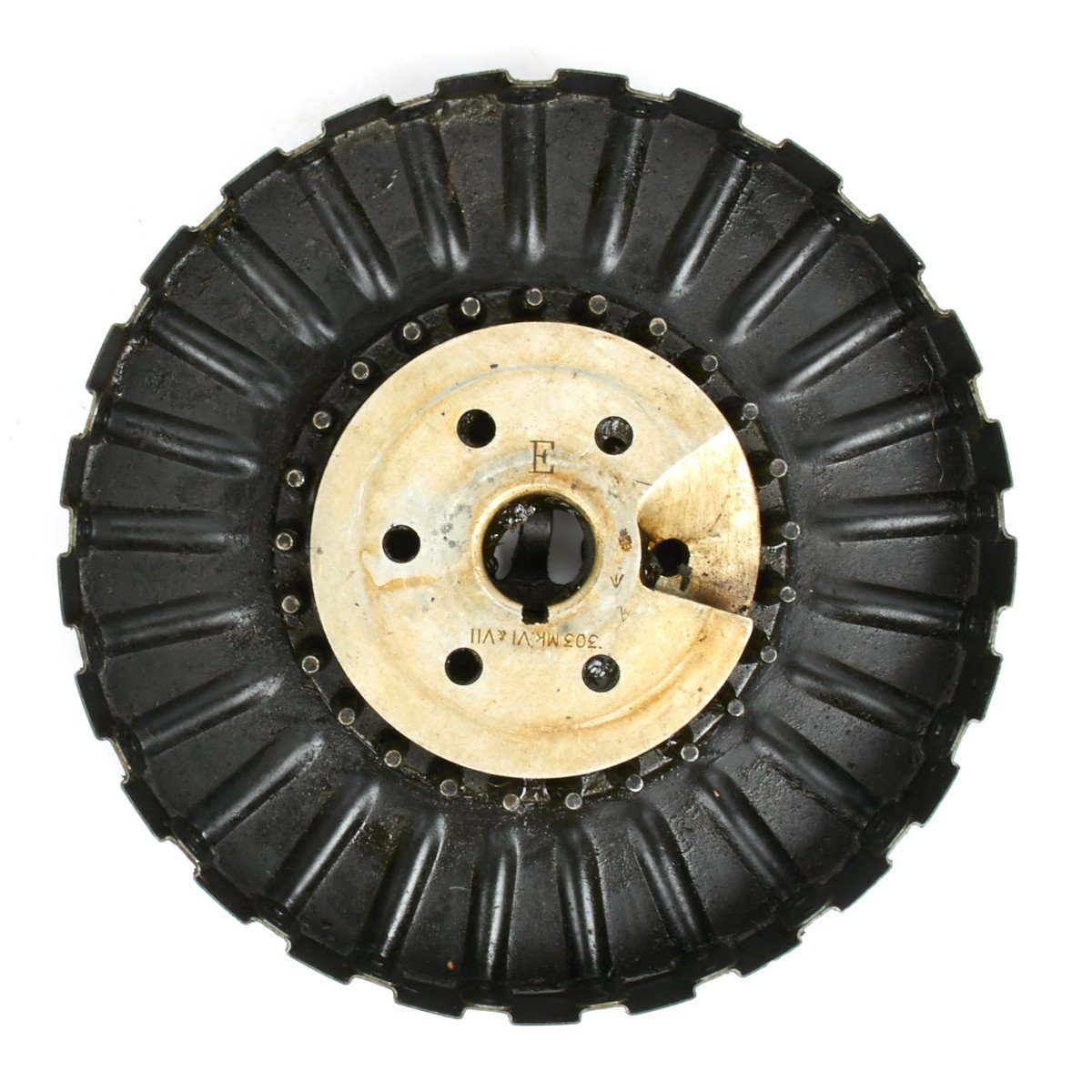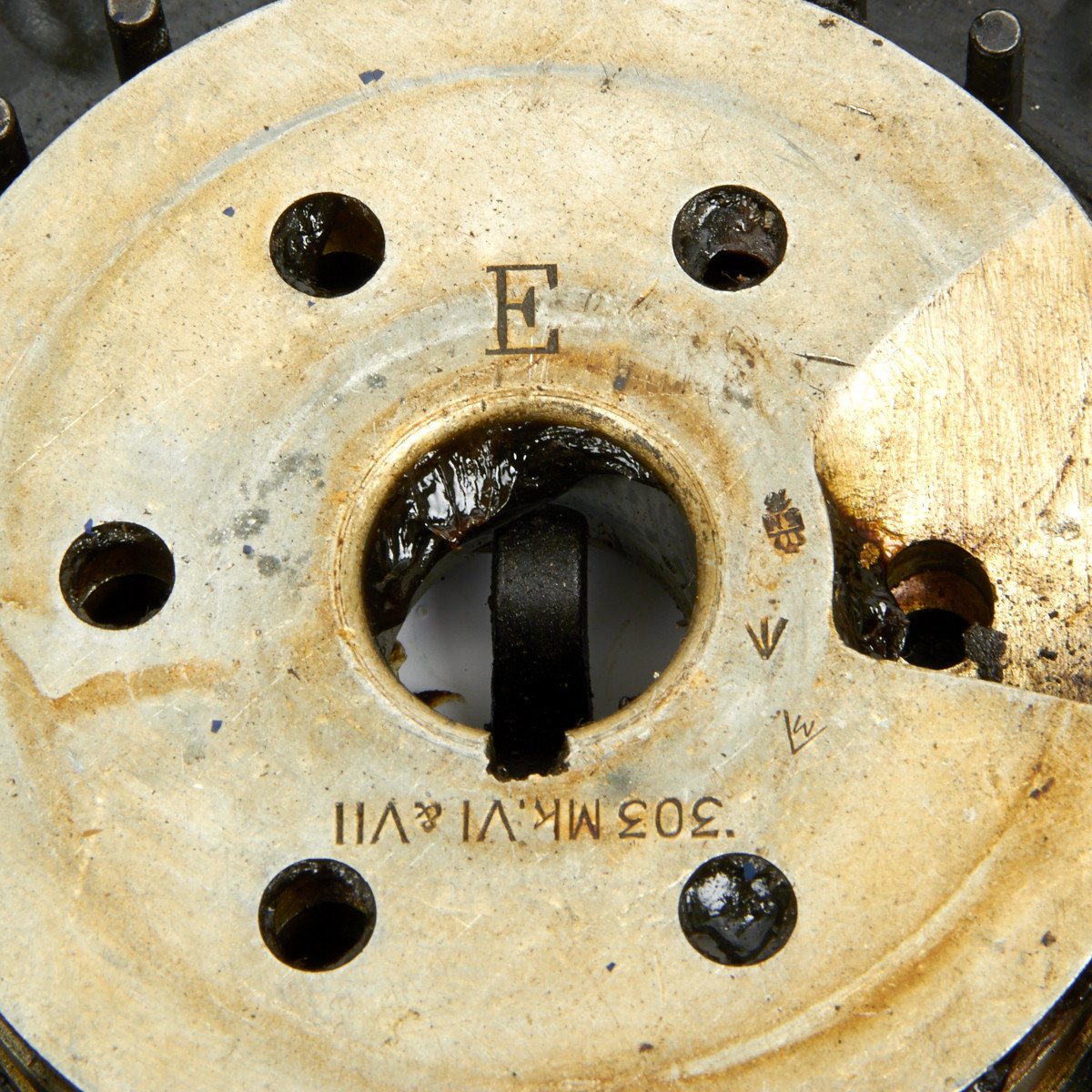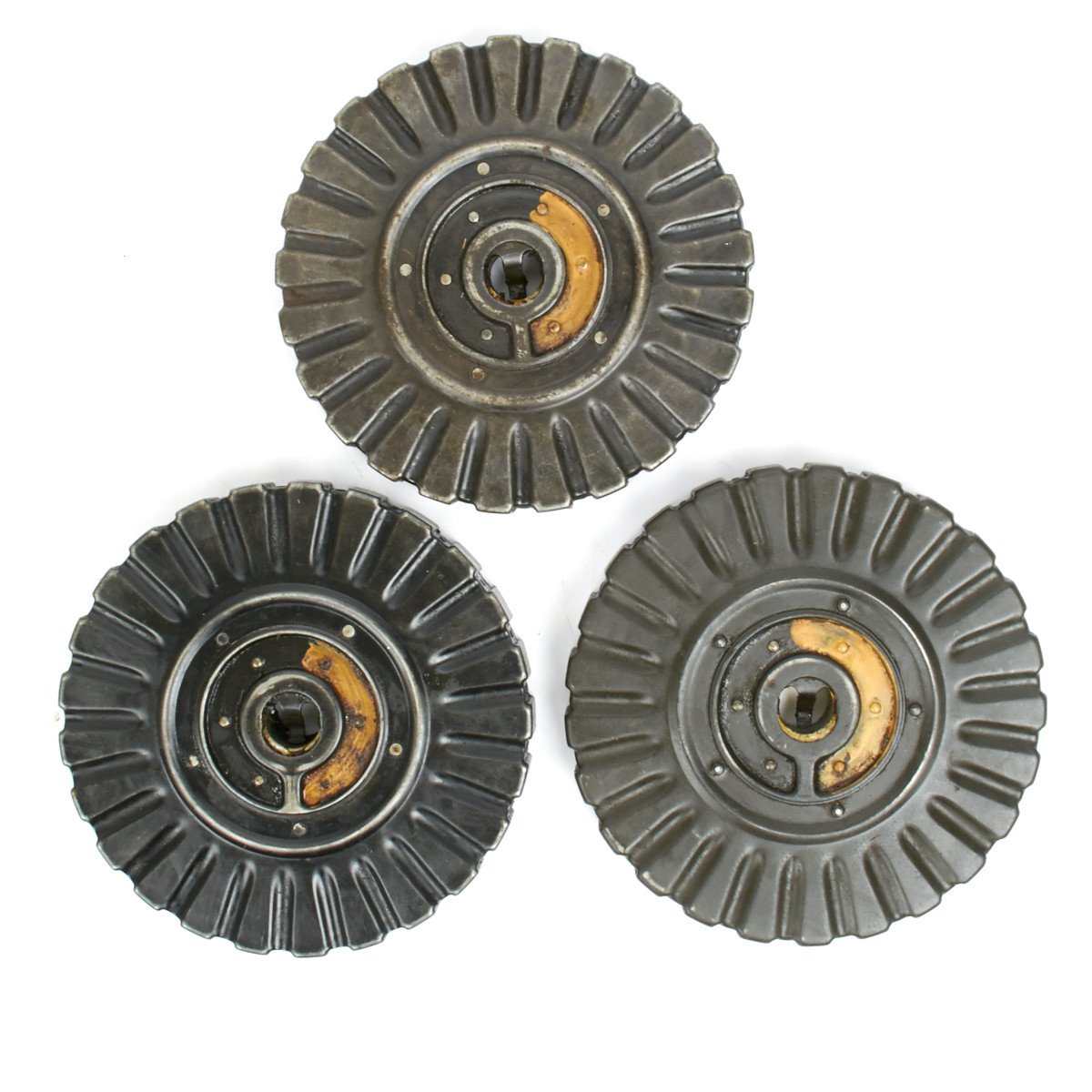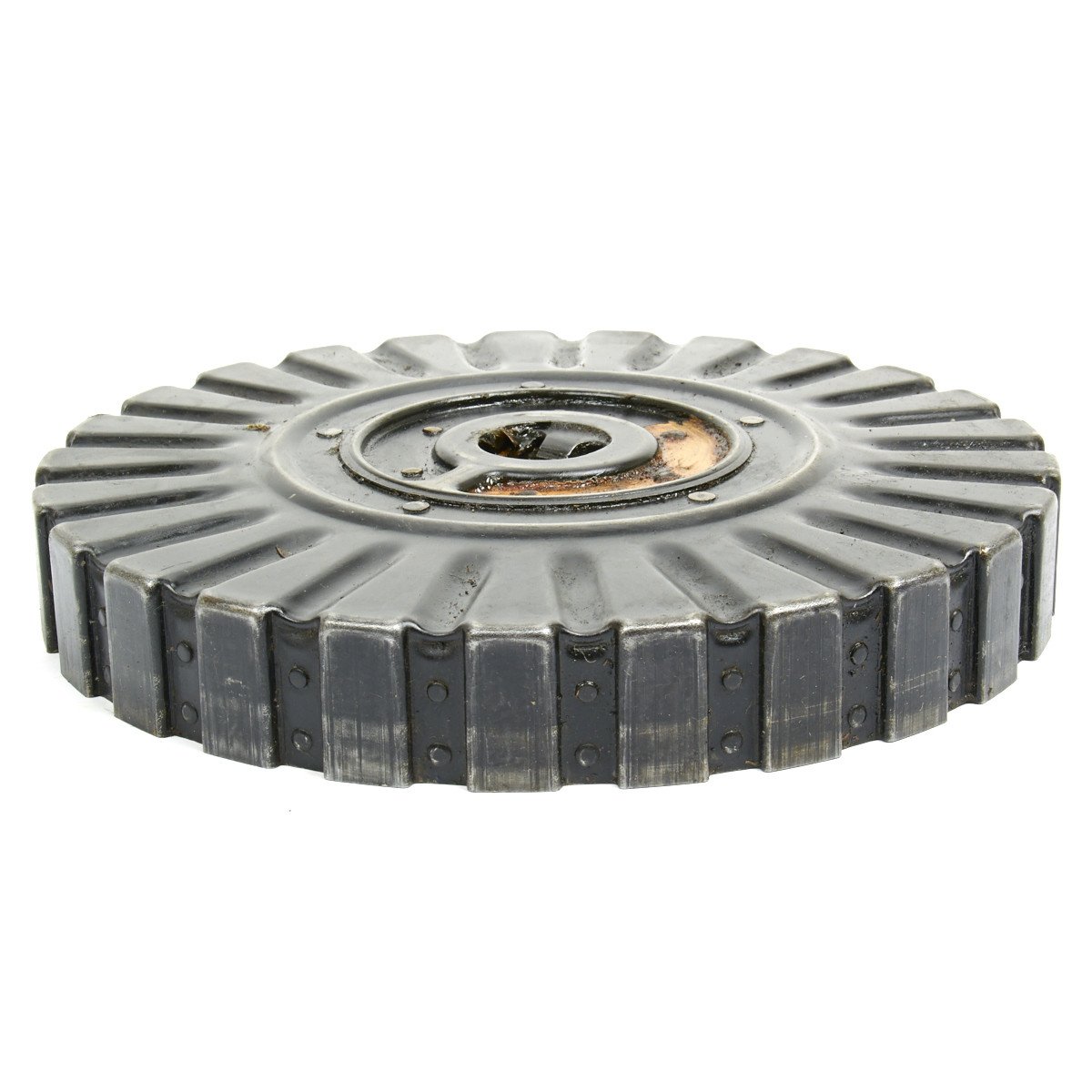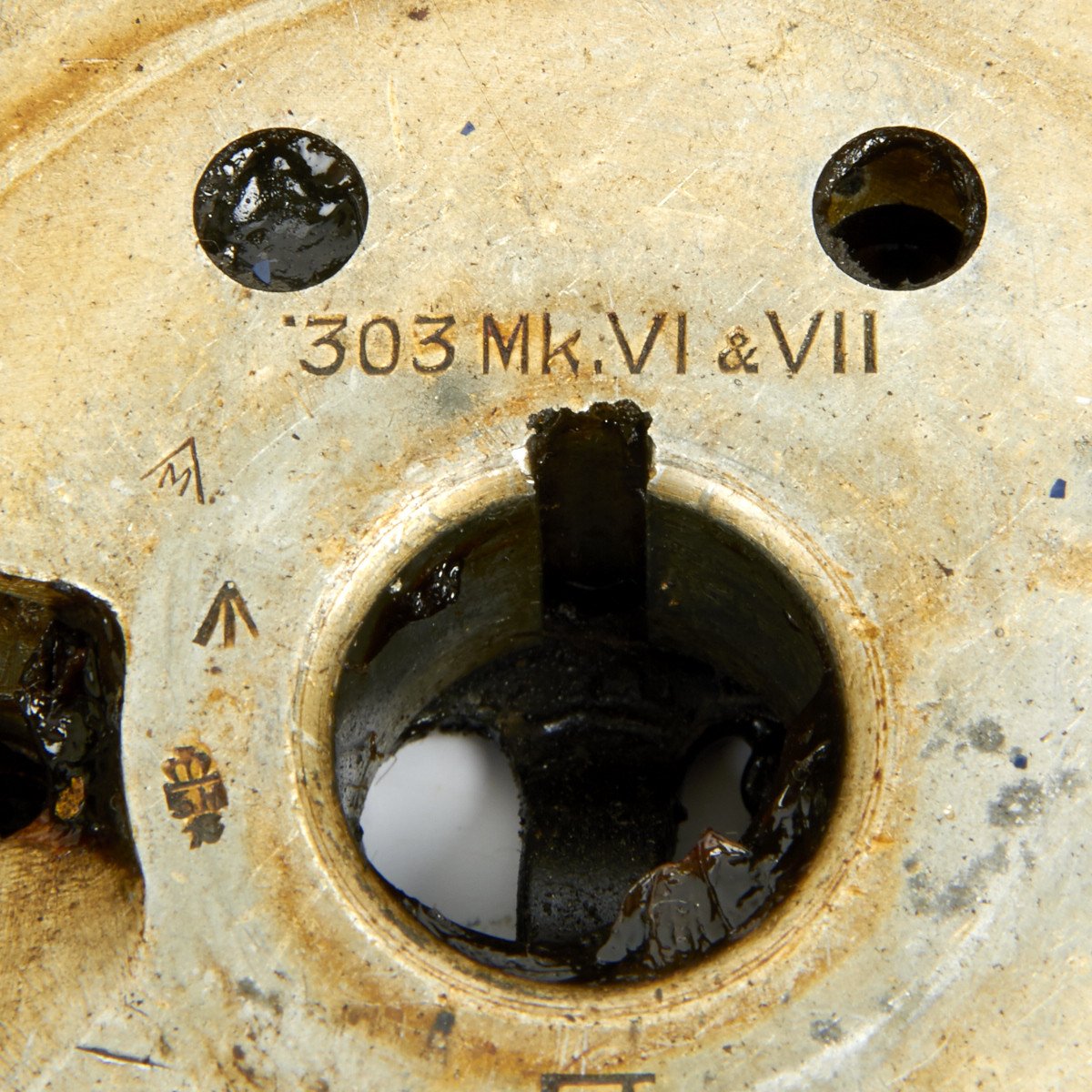Original British WWI .303 Lewis Gun MG Drum Pan Magazine Original Items
$ 89,95 $ 44,98
Original Item: These are quite scare today. Original standard British WWI era Lewis 47 round drum magazines for infantry use. Limited quantity available. Offered in very good to excellent condition. Will come packed in cosmoline for you to clean, as they have been stored for years. Markings vary.
The Lewis gun (or Lewis automatic machine gun or Lewis automatic rifle) is a World War I-era light machine gun of American design that was perfected and widely used by the British Empire. It was first used in combat in World War I, and continued in service with a number of armed forces through to the end of the Korean War. It is visually distinctive because of a wide tubular cooling shroud around the barrel – often omitted in World War I when used on aircraft – and a top-mounted drum-pan magazine. It was commonly used as an aircraft machine gun, almost always with the cooling shroud removed, during both world wars.
The Lewis gun used a pan magazine holding 47 or 97 rounds. Pan magazines hold the rounds in a radial fan. Unlike the more common drum magazines, which hold the rounds parallel to the axis and are fed by spring tension, pan magazines are mechanically indexed. The Lewis magazine was driven by a cam on top of the bolt which operated a pawl mechanism via a lever.
The Lewis gun was invented by US Army Colonel Isaac Newton Lewis in 1911, based on initial work by Samuel Maclean. Despite its origins, the Lewis gun was not initially adopted by the American militarymost likely because of political differences between Lewis and General William Crozier, the Chief of the Ordnance Department. Lewis became frustrated with trying to persuade the US Army to adopt his design and so (“slapped by rejections from ignorant hacks”, as he said), retired from the army. He left the United States in 1913 and headed to Belgium, where he established the Armes Automatique Lewis company in Liège to facilitate commercial production of the gun. Lewis had been working closely with British arms manufacturer The Birmingham Small Arms Company Limited (BSA) in an effort to overcome some of the production difficulties of the weapon. The Belgians bought a small number of Lewises in 1913, using the .303 British round, and in 1914, BSA purchased a license to manufacture the Lewis machine gun in England, which resulted in Col. Lewis receiving significant royalty payments and becoming very wealthy. Lewis and his factory moved to England before 1914, away from possible seizure in the event of a German invasion. The Belgian Army acquired only a handful of his guns, probably only just in double figures. They were not on general issue in the Belgian Army. They were used only in a few forays by motor vehicles, south of Antwerp, against the flank of the invading German Army.
The onset of World War I increased demand for the Lewis gun, and BSA began production (under the designation Model 1914). The design was officially approved for service on 15 October 1915 under the designation “Gun, Lewis, .303-cal. No Lewis guns were produced in Belgium during World War I; all manufacture was carried out by BSA in England and the Savage Arms Company in the US.
| Hand Select | No, Yes |
|---|
Fast Shipping with Professional Packaging
Thanks to our longstanding association with UPS FedEx DHL, and other major international carriers, we are able to provide a range of shipping options. Our warehouse staff is expertly trained and will wrap your products according to our exact and precise specifications. Prior to shipping, your goods will be thoroughly examined and securely secured. We ship to thousands clients each day across multiple countries. This shows how we're dedicated to be the largest retailer on the internet. Warehouses and distribution centres can be located throughout Europe as well as the USA.
Note: Orders with more than one item will be assigned a processing date depending on the item.
Before shipping before shipping, we'll conduct a thorough inspection of the items you have ordered. Today, the majority of orders will be delivered within 48 hours. The delivery time will be between 3-7 days.
Returns
The stock is dynamic and we cannot completely manage it because multiple stakeholders are involved, including our factory and warehouse. So the actual stock may alter at any time. It's possible that you may not receive your order once the order has been made.
Our policy is valid for a period of 30 days. If you don't receive the product within 30 days, we are not able to issue a refund or an exchange.
You can only return an item if it is unused and in the same state as the day you received it. You must have the item in its original packaging.
Related products
Uncategorized
Uncategorized
Uncategorized
Uncategorized
Band of Brothers ORIGINAL GERMAN WWII Le. F.H. 18 10.5cm ARTILLERY PIECE Original Items
Uncategorized
Australian WWII Owen MK1 Machine Carbine SMG Custom Fabricated Replica with Sling Original Items
Uncategorized
Uncategorized
Uncategorized
Uncategorized
Uncategorized
Uncategorized
Armored Burgonet Helmet & Polearm from Scottish Castle Leith Hall Circa 1700 Original Items
Uncategorized
Uncategorized
Uncategorized
Uncategorized
Uncategorized
Armoured Fighting Vehicles of the World: AFVs of World War One (Hardcover Book) New Made Items
Uncategorized
Uncategorized
Angolan Rebel 1970s era 60mm Inert Display Mortar from Angolan Civil War Original Items
Uncategorized
